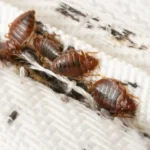Physical Address
304 North Cardinal St.
Dorchester Center, MA 02124
Physical Address
304 North Cardinal St.
Dorchester Center, MA 02124

Fleas are a common problem for dogs, causing itching, discomfort, and sometimes even health issues like skin infections or tapeworms. If your dog is scratching excessively or you notice tiny black specks on their fur, it’s time to take action. Here’s a detailed guide on how to effectively get rid of fleas on your dog.

Before treating your dog, make sure you’re dealing with fleas. Common signs include:
A fine-toothed flea comb is an essential tool. Comb your dog’s fur carefully, especially around the neck, tail, and belly. This helps remove fleas and flea dirt manually. Dip the comb in soapy water after each pass to kill the fleas.
There are various treatments available, depending on your preference and your dog’s health:
Fleas can live in carpets, bedding, and furniture, so treating your dog alone isn’t enough.
Prevention is key to avoiding recurring flea problems.
If your dog has a severe flea infestation, develops skin infections, or reacts poorly to over-the-counter treatments, consult your veterinarian. They can prescribe stronger medications and advise on the best prevention methods.
Conclusion: Fleas are more than just an annoyance—they can affect your dog’s health and comfort. Regular grooming, proper treatment, and home cleaning can keep your dog flea-free and happy.



